
HOME
INTRO
SYMBOLS
ALMANAC
ECONOMY
GEOGRAPHY
STATE MAPS
PEOPLE
FORUM
NEWS
COOL SCHOOLS
STATE QUIZ
STATE LINKS
BOOK STORE
MARKETPLACE
NETSTATE.STORE
NETSTATE.MALL
GUESTBOOK
CONTACT US


South Carolina State Spider
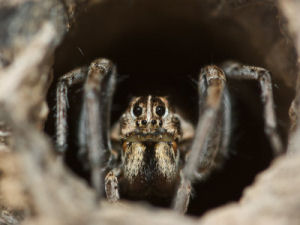
South Carolina State Spider: Carolina Wolf Spider
Wolf Spider at the Top of His Burrow
It took a third grade student, Skyler B. Hutto, from Sheridan Elementary School in Orangeburg to ensure that South Carolina had an official state spider. But, even though Skyler had "connections" in the South Carolina State Senate, it almost didn't happen.
On February 2, 2000, Senate Bill No. 1091 (S1091), proposing that the Carolina wolf spider be named the official spider of South Carolina, was introduced by Skyler's father, Senator Brad Hutto.
S1091 passed in the Senate, on February 22, 2000, but stalled in the House Committee on Agriculture, Natural Resources and Environmental Affairs.
On April 20, 2000, House Bill No. 4277 (H4277), declaring the "Richardson Waltz" the official waltz of South Carolina, was passed in the House and forwarded to the Senate for consideration.
At this time S1091 (the "spider" bill) had been sitting in the House Committee on Agriculture, Natural Resources and Environmental Affairs for two months. No action had been taken on it.
When it came up in the Senate, Senator Hutto proposed that H4277 (the "waltz" bill) be amended to include the proposal of S1091 (the "spider" bill). The amendment to include the Carolina wolf spider designation in H4277 was passed in the Senate and sent back to the House for their approval.
On May 30, 2000, the House said no to the amendment.
The Senate insisted on the amendment and formed a conference committee to resolve the issue.
The House balked but, after much wrangling, agreed to the amended version of H4277 on June 22, 2000.
On July 21, 2000, when Governor Mark Sanford signed House Bill No. 4277 into law, the "Richardson Waltz" became South Carolina's official waltz and the Carolina wolf spider became South Carolina's official spider.
(A389, R459, H4277)
AN ACT
TO AMEND THE CODE OF LAWS OF SOUTH CAROLINA, 1976, BY ADDING SECTIONS 1-1-667 AND 1-1-701 SO AS TO DESIGNATE CERTAIN STATE EMBLEMS OR SYMBOLS.
Be it enacted by the General Assembly of the State of South Carolina:
PART I
Richardson Waltz Act
SECTION 1. Sections 1 through 4 of this act are known and may be cited as the "Richardson Waltz Act".
Findings
SECTION 2. The General Assembly finds that:
(1) The Richardson family, descendants of General Richard Richardson (1704-1780) who came from Virginia as a surveyor to settle in South Carolina, is known for its great love of music and dancing.
(2) Many balls were held as social entertainment for family and friends from far and wide, and the melody of a favorite waltz for dancing was one which was "originated" by a family member who played "by ear".
(3) This melody, known as "The Richardson Waltz", still lives today, having been handed down "by ear" from generation to generation but had never been written until 1985, when it was arranged by Mary S. Richardson Briggs.
(4) Mrs. W. M. Richardson of Orangeburg planted the seed for the preservation of "The Richardson Waltz" many years ago, and Mrs. H. B. Richardson of Summerton helped hand it down and preserve it for posterity.
(5) This waltz is a beautiful and soulful melody, is a memento of the musical tradition of the Richardson family, has for many generations played an unofficial but important role in the musical history of South Carolina, and is deserving of designation as the Official State Waltz.
(6) A bill to designate "The Richardson Waltz" as the official waltz was sponsored by Representatives C. Alexander Harvin III, Elsie Rast Stuart, Jimmy C. Bales, Lynn Seithel, Jackson S. "Seth" Whipper, Becky Meacham-Richardson, Harry L. Ott, Jr., John Milton "Jake" Knotts, Jr., and Walton J. McLeod.
Official state waltz
SECTION 3. Chapter 1, Title 1 of the 1976 Code is amended by adding:
"Section 1-1-667. 'The Richardson Waltz' is designated as the official state waltz."
Distribution by Code Commissioner
SECTION 4. The Code Commissioner shall distribute copies of Part I of this act to any interested persons including the members of the Richardson family and the Daughters of the American Revolution.
PART II
Carolina Wolf Spider Act
SECTION 5. Sections 5 through 8 of this act are known and may be cited as the "Carolina Wolf Spider Act".
Findings
SECTION 6. The General Assembly finds that:
(1) The state emblems and symbols adopted by the General Assembly and listed in the South Carolina Legislative Manual are an excellent educational resource for students of this State.
(2) After reading in the Legislative Manual about the existing state symbols and emblems, Skyler B. Hutto, a third grade student at Sheridan Elementary School in Orangeburg, noted that there was no official state spider and suggested that the Carolina Wolf Spider be given that designation.
(3) A bill to designate the Carolina Wolf Spider as the official state spider was sponsored by Senator Brad Hutto.
(4) Skyler Hutto has worked diligently to pursue this designation for the Carolina Wolf Spider.
(5) His schoolmates and teachers have followed the progress of the legislation with interest.
(6) Through this experience, the students have learned both about spiders and about how a bill becomes a law, which has enhanced the third graders' study of South Carolina history.
Official state spider
SECTION 7. Chapter 1, Title 1 of the 1976 Code is amended by adding:
"Section 1-1-701. The 'Carolina Wolf Spider', Hogna carolinensis, is designated as the official state spider."
Distribution by Code Commissioner
SECTION 8. The Code Commissioner shall distribute copies of Part II of this act to any interested persons including Skyler B. Hutto and the students and teachers of the Sheridan Elementary third grade class.
PART III
SECTION 9. This act takes effect upon approval by the Governor.
Ratified the 22nd day of June, 2000.
Approved the 21st day of July, 2000.
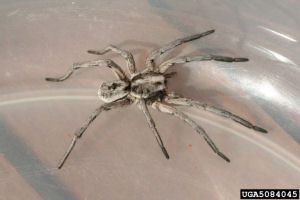
Official State Spider: Carolina Wolf Spider (Hogna carolinensis)
Licensed under a Creative Commons Attribution 3.0 License.
Whitney Cranshaw, Colorado State University, Bugwood.org
South Carolina Law
The following information was excerpted from the The South Carolina Code of Laws, title 1, chapter 1, article 9, section 1-1-701.
Title 1 - Administration of the Government
CHAPTER 1. GENERAL PROVISIONS
ARTICLE 9. STATE EMBLEMS, PLEDGE TO STATE FLAG, OFFICIAL OBSERVANCES
SECTION 1-1-701.
SECTION 1-1-701. Official State spider.
The "Carolina Wolf Spider", Hogna carolinensis, is designated as the official state spider.
Sources...
State of South Carolina. e>South Carolina Code of Laws. Columbia: State of South Carolina, 2011. Web. 8 Jun 2011.
Shearer, Benjamin F. and Barbara S. State Names, Seals, Flags and Symbols: A Historical Guide Third Edition, Revised and Expanded. Westport, Conn: Greenwood Press, 3 Sub edition, 2001.
Additional Information
The Carolina Wolf Spider: South Carolina Department of Parks, Recreation & Tourism
Carolina Wolf Spider Lycosa carolinensis: From Spiders.US
Wolf Spiders Hogna [previously known as Lycosa ] species: PennState College of Agricultural Sciences.
Hogna carolinensis - (Walckenaer, 1805): A network connecting science with conservation - NatureServe Explorer: An Online Encyclopedia of Life.
Hogna carolinensis: Photographs of Hogna carolinensis from CalPhotos. CalPhotos is a project of The Biodiversity Sciences Technology group (BSCIT), University of California, Berkeley.
Hogna carolinensis: Photographs of Hogna carolinensis from BugGuide.net.
More symbols & emblems: Complete list of official South Carolina state symbols from NETSTATE.COM.
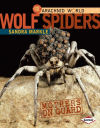
Wolf Spiders
Mothers on Guard
Sandra Markle
Wolf Spiders: Mothers on Guard, by Sandra Markle. 48 pages. Publisher: Lerner Pub Group (T) (March 2011) Reading level: Ages 9-12. Make way for that arachnid with babies on its back—it is a wolf spider mother protecting her young! In this book, you will learn how wolf spiders are similar to and different from other arachnids. Close-up photographs and diagrams reveal extraordinary details about the spider’s body both inside and out. And hands-on activities will let you experience how a wolf spider female keeps her eggs and young safe. Learn more about this fascinating member of nature’s Arachnid World..

Spiderology
Michael Elsohn Ross
Spiderology, by Michael Elsohn Ross. 48 pages. Publisher: Carolrhoda Books (May 2000) Reading level: Ages 5-12. Spiderology is the study of spiders, those web-spinning creatures you might see crawling across your ceiling, or in your basement. To become a spiderologist, all you need is a little bit of time and interest to learn about these interesting insects. In this fascinating book, readers are invited to take a complete tour into the world of the spider. Learn about spiders through basic activities that teach while entertaining. These activities include the building of a spider inn and sketching a billboard with your favorite spider as a model.
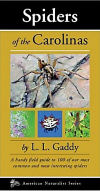
Spiders of the
Carolinas
L. L."Chick" Gaddy
Spiders of the Carolinas, by L. L. "Chick" Gaddy. 208 pages. Publisher: Kollath-Stensaas Pub (April 30, 2009) This handy book is your field guide to the most common and fascinating spiders of North Carolina and South Carolina. It includes amazing facts, superb color photos, detailed information and much more! South Carolina naturalist/researcher/author L. L.“Chick” Gaddy will introduce you to 100 species of spiders including the huge Carolina Wolf Spider, the poisonous Black Widow, the colorful Basilica Spider, and the bizarre Spinybacked Orbweaver.
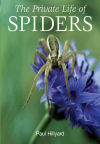
The Private Life
of Spiders
Paul Hillyard
The Private Life of Spiders, by Paul Hillyard. 160 pages. Publisher: Princeton University Press; 1st Ed. edition (January 3, 2008) With more than 100 different families and 40,000 individual species, spiders are among the most successful creatures on Earth. Highly adaptable, they live almost everywhere, from equatorial rainforest to Arctic tundra. And they come in a huge range of shapes and sizes, from the tiny Patu digua, measuring less than half a millimeter, to the immense bird-eating tarantula, which can reach a span of eleven inches. In The Private Life of Spiders, spider expert Paul Hillyard takes the reader on a fascinating and richly illustrated tour of the lives of some of the world's most remarkable spiders.
The Private Life of Spiders reveals the intriguing behaviors of these complex creatures, from their extraordinary web-spinning skills and hunting strategies to their courtship displays and devoted care for their young. The book also describes other surprising skills of some spiders, such as the ability to cross vast stretches of open water.
Written in an engaging style, The Private Life of Spiders also looks at why people are scared of spiders, explains why such fear is generally misplaced, and shows why more needs to be done to protect endangered spiders.
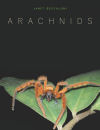
Arachnids
Jan Beccaloni
Arachnids, by Jan Beccaloni. 320 pages. Publisher: University of California Press; 1 edition (November 1, 2009) With around 11 distinctive lineages and over 38,000 species of spiders alone, arachnids are an amazingly diverse group of invertebrates—and with names like the Goliath Bird-Eating Spider, the Tailless Whip Spider, and the Harvestman, they can be both spectacular and captivating. Most books about arachnids focus on spiders, neglecting scorpions, ticks, mites, wind spiders, and other fascinating yet poorly understood groups. This adventurous volume summarizes all existing knowledge about each major type of arachnid, revealing their secrets through detailed species accounts, brilliant photographs, and a compelling cast of eight-legged characters. It examines the anatomy, habitat, behavior and distribution of each lineage, from the garden spider to the death stalker scorpion and even a species of mite that lives inside a monkey's lungs. Drawing on the vast resources at London's Natural History Museum, Arachnids spins a sensational tale, debunking common myths and delving deep into the lives of these bizarre and beautiful creatures.
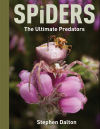
Spiders
The Ultimate Predators
Stephen Dalton
Spiders: The Ultimate Predators, by Stephen Dalton. 208 pages. Publisher: Firefly Books (September 12, 2008) Spiders are the most successful of all terrestrial predators. Humans share the planet with about 40,000 known species of the remarkable creatures called spiders. From mountaintops to seashores and from ponds to deserts, spiders are likely to be nearby.
Stephen Dalton provides fascinating information on the astonishing array of techniques spiders use for catching their prey: trapping in webs, lassoing, jumping, stealing, chasing, ambushing, spitting, fishing, masquerading as other animals and even attracting prey by mimicking the prey's pheromones.
Although spiders have an image problem, many of these intriguing creatures are actually not at all creepy. The jumping spiders, by far the most numerous single group, have, some might say, an almost cuddly appearance.

